Sleep Apnea and Children's Development: Impact, Effects, and Treatment
Sep 5th 2023
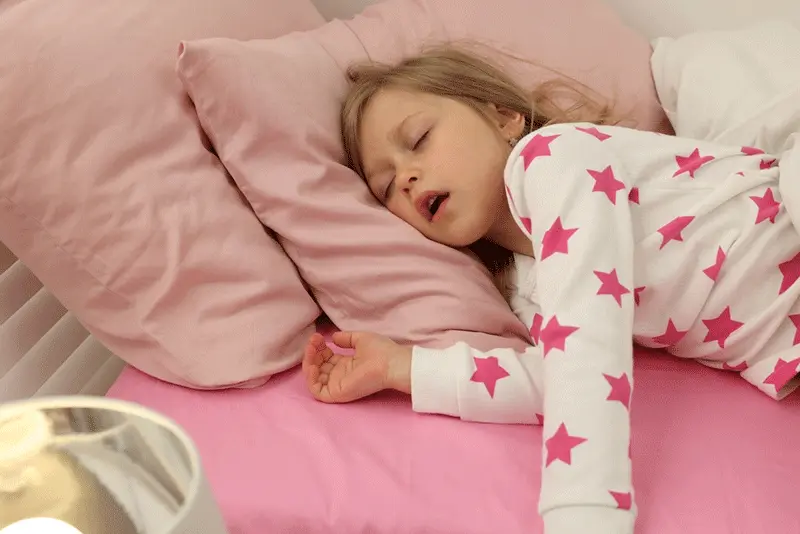
Imagine watching your child sleep but they suddenly stop breathing. Panic sets in, and then relief follows when they start again. For parents of children struggling with sleep apnea, this scenario is a familiar and heart-wrenching nightly reality. Sleep apnea not only disturbs restful nights; it also poses grave implications for children's physical growth, cognitive development and overall health. However, with early detection and proper treatment, these hurdles can be overcome. Dive deeper with us into an exploration of the impact, effects and treatment options for childhood sleep apnea.
Sleep apnea can cause interruptions in sleep, which can lead to learning and behavior problems in children. If left untreated, it can also potentially cause growth and heart problems. Treatment options, such as removing enlarged tonsils or adenoids, iron supplementation, and placement of ear tubes, may help alleviate symptoms and improve a child's overall development and quality of life. If you suspect that your child has sleep apnea, please consult with a healthcare professional for further evaluation and treatment recommendations.
Understanding Sleep Apnea in Children
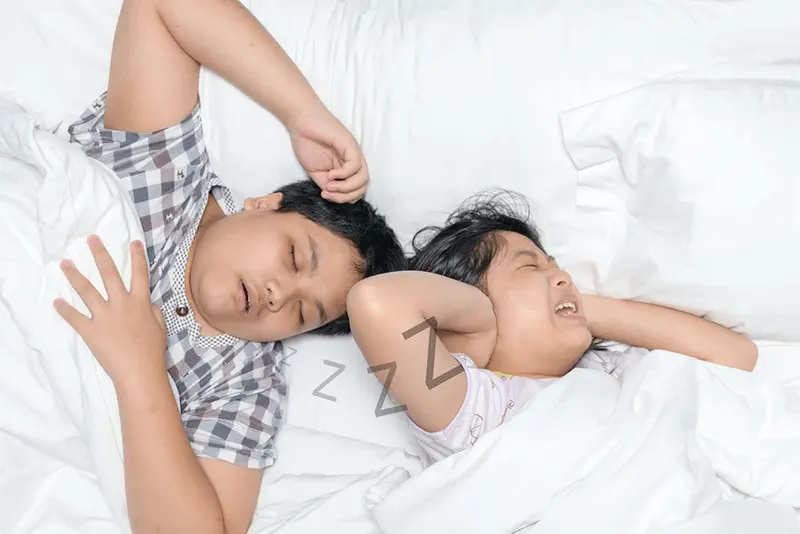
Sleep apnea is not limited to adults but can also affect children, although it may manifest differently. In simple terms, sleep apnea in children refers to a condition where they experience interruptions in their breathing during sleep. These interruptions occur due to an obstruction in the upper airway, which can restrict airflow and cause momentary pauses in breathing.
The most common type of sleep apnea in children is obstructive sleep apnea (OSA). OSA can be caused by various factors such as relaxed throat muscles, enlarged tonsils or adenoids, being overweight, or having medical conditions like Down syndrome or cerebral palsy. Additionally, problems with the mouth, jaw, or throat that narrow the airway can also contribute to OSA.
When a child has OSA, their breathing may become shallow or even stop altogether during sleep. As a result, their brain and body may not receive enough oxygen, leading to disturbances in their overall sleep pattern. The interrupted sleep can have a significant impact on a child's development and well-being.
It’s important to note that understanding and recognizing the signs of sleep apnea in children is crucial for early intervention and treatment. Let's explore the symptoms and severity of sleep apnea in children further.
Symptoms and Severity
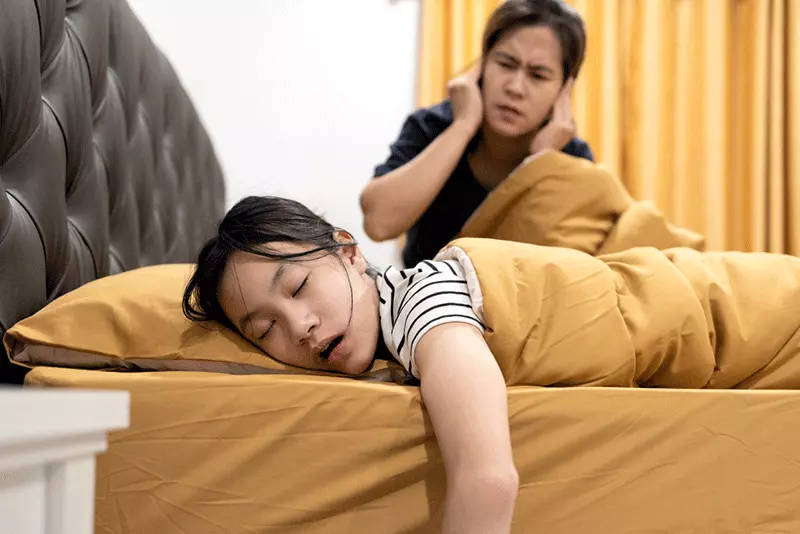
Recognizing the symptoms of sleep apnea in children is essential for timely diagnosis and appropriate intervention. Some common signs to watch out for include:
- Snoring: While snoring alone does not necessarily indicate sleep apnea, persistent loud snoring with pauses or gasps can be a red flag.
- Restless Sleep: Children with sleep apnea often exhibit restless sleep patterns where they toss and turn frequently or assume unusual positions.
- Heavy Breathing: You may notice your child breathing heavily while they are asleep.
- Excessive Daytime Sleepiness: Children with sleep apnea may present with excessive daytime sleepiness, which can impact their concentration, performance in school, and overall behavior.
- Behavioral/Learning Problems: Sleep disruptions caused by sleep apnea can also lead to behavioral issues, difficulty concentrating, and learning problems.
- Bedwetting: If your child has been previously dry at night but suddenly starts bedwetting again, it could be a potential indicator of sleep apnea.
Imagine a parent observing these symptoms in their child. They notice that their child snores loudly at night and often wakes up feeling tired and irritable during the day. The child's school performance takes a hit as they struggle to concentrate and pay attention in class. The parent becomes concerned and seeks medical advice to understand what might be affecting their child's well-being.
The severity of sleep apnea in children can vary from mild to severe. It is influenced by factors such as the frequency and duration of breathing interruptions during sleep, as well as the impact on the child's daily functioning. A comprehensive evaluation by a healthcare professional is necessary to determine the severity of sleep apnea and develop an appropriate treatment plan.
Now that we have a deeper understanding of sleep apnea in children and its symptoms, let's explore how healthcare professionals diagnose this condition accurately.
- According to a research study published in Pediatrics, children with untreated obstructive sleep apnea were four-times as likely to have delayed development (physical, cognitive) compared to children without this sleep disorder.
- A 2021 study found that children who had sleep apnea were almost 60% more likely to exhibit signs of behavioral problems and lower academic achievements.
- Research by American Academy of Sleep Medicine reveals that approximately 25-40% of children diagnosed with attention-deficit/hyperactivity disorder (ADHD) have incidents of sleep-disordered breathing, including obstructive sleep apnea.
Diagnosis Methods
Diagnosing sleep apnea in children requires a careful assessment of various factors and symptoms. Healthcare professionals may employ different methods to confirm the presence of sleep apnea and determine the severity of the condition.
Lets explore some common diagnosis methods used for identifying sleep apnea in children:
-
Clinical Evaluation: The initial step typically involves a thorough clinical evaluation by a healthcare provider or pediatrician. They will assess the child's medical history, review any reported symptoms, and conduct a physical examination to check for signs such as enlarged tonsils or adenoids.
-
Sleep Study (Polysomnogram): A sleep study, also known as a polysomnogram, is often recommended to provide definitive diagnosis and assess the severity of sleep apnea. During this test, the child spends a night at a sleep center or undergoes an at-home sleep study while monitored by specialized equipment. This study measures various factors such as brain waves, heart rate, breathing patterns, eye movements, and blood oxygen levels while the child is asleep.
-
Obstructive Events Monitoring: To measure instances of obstructive events during sleep, respiratory effort sensors may be used alongside the polysomnogram. These sensors detect episodes of restricted airflow or pauses in breathing that are characteristic of sleep apnea.
-
Video Recording: In some cases, recording a video of the child while sleeping can help healthcare professionals observe certain behaviors such as snoring or gasping for breath, which can support the diagnosis of sleep apnea.
-
Specialty Referrals: Depending on the situation, a referral to specialists such as an Ear, Nose, and Throat (ENT) specialist or a sleep specialist may be necessary for further evaluation and treatment planning.
Think of diagnosing sleep apnea like solving a puzzle - each piece plays an important role in uncovering the full picture of your child's sleep health.
Now that we have explored the various diagnosis methods for sleep apnea in children, let's discuss the potential effects of sleep apnea on their development.
Sleep Apnea's Effect on Children's Development
Sleep apnea can significantly impact a child's overall development due to the negative effects caused by disrupted sleep patterns and reduced oxygen levels. Proper and restful sleep is crucial during childhood as it supports physical growth, cognitive function, and behavioral regulation. When sleep apnea disrupts these essential processes, it can lead to a range of consequences.
Sleep apnea affects various aspects of a child's development. Let's take a closer look at some of the potential impacts:
-
Cognitive Function: Adequate sleep is vital for a developing brain, and sleep-disordered breathing can affect cognitive function in children with sleep apnea. They may experience difficulties with memory, attention span, problem-solving skills, and overall academic performance.
-
Behavioral Issues: Sleep apnea can contribute to behavioral problems such as hyperactivity, inattention, impulsivity, irritability, mood swings, and aggression. These issues may manifest as symptoms similar to attention deficit hyperactivity disorder (ADHD), leading to misdiagnosis or incorrect treatment approaches.
-
Emotional Regulation: Poor-quality sleep caused by sleep apnea can disrupt emotional regulation in children. They may exhibit increased emotional sensitivity, anxiety, depression, or difficulty managing stress compared to peers who do not have sleep apnea.
-
Physical Health: Untreated sleep apnea can also affect physical health in children. It may contribute to excessive daytime fatigue, growth issues, enuresis (bedwetting), and even cardiovascular problems if left untreated over an extended period.
Imagine a child struggling with concentration in school due to sleep deprivation caused by sleep apnea. This can result in poor academic performance, reduced self-confidence, and difficulty keeping up with peers.
Now that we have explored the potential effects of sleep apnea on children's development, it becomes essential to address the appropriate treatment approaches that can help manage this condition effectively.
Cognitive and Behavioral Impact
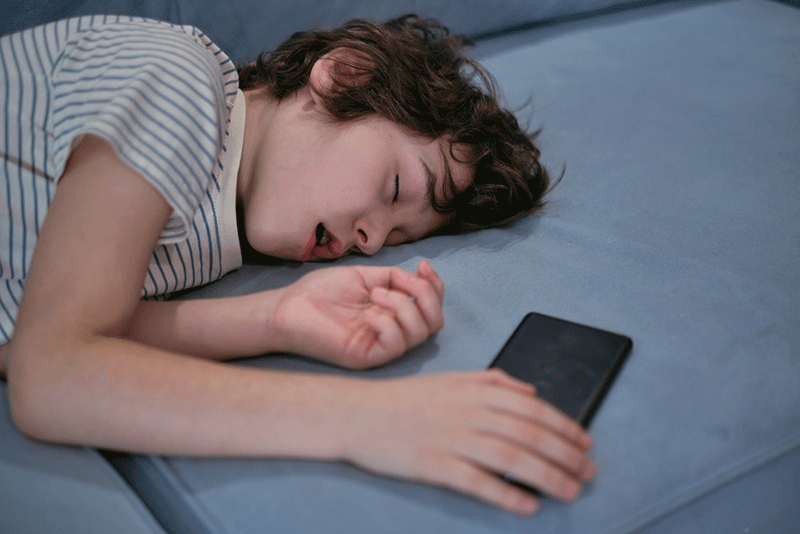
Sleep apnea in children can have a significant impact on their cognitive and behavioral development. When a child experiences pauses in their breathing during sleep, it disrupts the normal sleep cycle and reduces the amount of oxygen reaching their brain. This can lead to various cognitive and behavioral issues.
Children with sleep apnea often exhibit difficulties with attention, concentration, and memory. They may struggle to stay focused in school or have trouble completing tasks that require sustained mental effort. These cognitive impairments can significantly affect their academic performance and overall learning experience.
For instance, imagine a 10-year-old child named Emily who has undiagnosed sleep apnea. Due to frequent interruptions in her sleep, she struggles to concentrate in class and has a hard time retaining information. She frequently falls behind in her assignments and feels frustrated because she cannot keep up with her peers.
Furthermore, sleep apnea can also impact a child's behavior and emotional well-being. Children with untreated sleep apnea may exhibit irritable or hyperactive behavior, which can be mistaken for attention deficit hyperactivity disorder (ADHD). They may also experience mood swings, anxiety, or depression due to chronic fatigue and poor quality of sleep.
It is important for parents, caregivers, and educators to recognize the potential cognitive and behavioral impact of sleep apnea in children. Identifying and addressing these issues early on can make a significant difference in the child's development and overall quality of life.
Long-term Consequences on Academic Performance
The long-term consequences of untreated sleep apnea on academic performance in children can be substantial. The disruptions in sleep caused by sleep apnea can lead to daytime exhaustion, difficulty staying awake during class, and impaired cognitive function.
Sleep is crucial for memory consolidation and learning. When a child with sleep apnea does not get enough restorative sleep each night, it can significantly impact their ability to retain information and perform well academically. They may struggle with reading comprehension, mathematical reasoning, and problem-solving skills.
Take the example of a teenage boy named Ethan who has been experiencing sleep apnea symptoms for years without proper diagnosis or treatment. His academic performance has suffered as a result, and he consistently receives below-average grades. Despite putting in effort to study, he finds it hard to concentrate during exams and often feels mentally foggy.
Moreover, the daytime sleepiness that accompanies sleep apnea can further hinder a child's ability to engage in classroom activities and participate in extracurriculars. They may miss out on valuable learning opportunities and social interactions, impacting their overall educational experience.
It is worth noting that the consequences of untreated sleep apnea on academic performance are not limited to the immediate grade level. Over time, if left unaddressed, these difficulties can accumulate and impact a child's educational trajectory throughout their schooling years.
Recognizing the potential long-term consequences on academic performance underscores the importance of early detection and treatment for pediatric sleep apnea. By addressing the underlying sleep disruptions and providing appropriate interventions, children can have an improved chance of success in their academic pursuits.
Treatment Options for Pediatric Sleep Apnea

When it comes to treating pediatric sleep apnea, there are various options available depending on the severity of the condition and the underlying causes. The goal is to improve the child's quality of sleep, alleviate symptoms, and promote healthy development. Here are some common treatment methods:
-
Adenotonsillectomy: This surgical procedure involves removing the tonsils and adenoids, which are often enlarged in children with sleep apnea. Adenotonsillectomy is considered the primary treatment for obstructive sleep apnea (OSA) in children due to its high success rate in alleviating symptoms and improving sleep.
-
Continuous Positive Airway Pressure (CPAP): This treatment involves wearing a mask over the nose or mouth during sleep, which delivers pressurized air to keep the airways open. CPAP is often used when surgery is not an option or as a temporary solution while awaiting surgery. It can be effective in managing moderate to severe cases of pediatric sleep apnea.
-
Orthodontic interventions: For children whose narrow dental arches and jaw structures contribute to their sleep apnea, orthodontic treatments like palatal expansion or orthognathic surgery may be recommended to widen the airway and improve breathing during sleep.
-
Weight management: In cases where obesity is a contributing factor to sleep apnea, promoting healthy weight loss through diet and exercise can play a crucial role in reducing symptoms and improving overall health.
-
Positive Airway Pressure (PAP) therapy: Similar to CPAP, PAP therapy involves using a device that provides constant positive air pressure but offers more flexibility in terms of masks and air delivery mechanisms. PAP therapy may be considered for children who cannot tolerate CPAP or have specific anatomical challenges.
-
Lifestyle modifications: Encouraging healthy lifestyle habits such as regular exercise, maintaining a consistent sleep schedule, and promoting good sleep hygiene can complement other treatment methods and improve sleep apnea symptoms.
Its important to note that the appropriate treatment option for a child with sleep apnea should be determined by a medical professional specializing in sleep medicine or an otolaryngologist. Individualized care plans are crucial as each child condition may vary in severity and underlying causes.
While these conventional treatment options have shown effectiveness in managing pediatric sleep apnea, ongoing advancements in medical technology have paved the way for innovative interventions that offer additional alternatives for patients.
Medical Innovations and Interventions
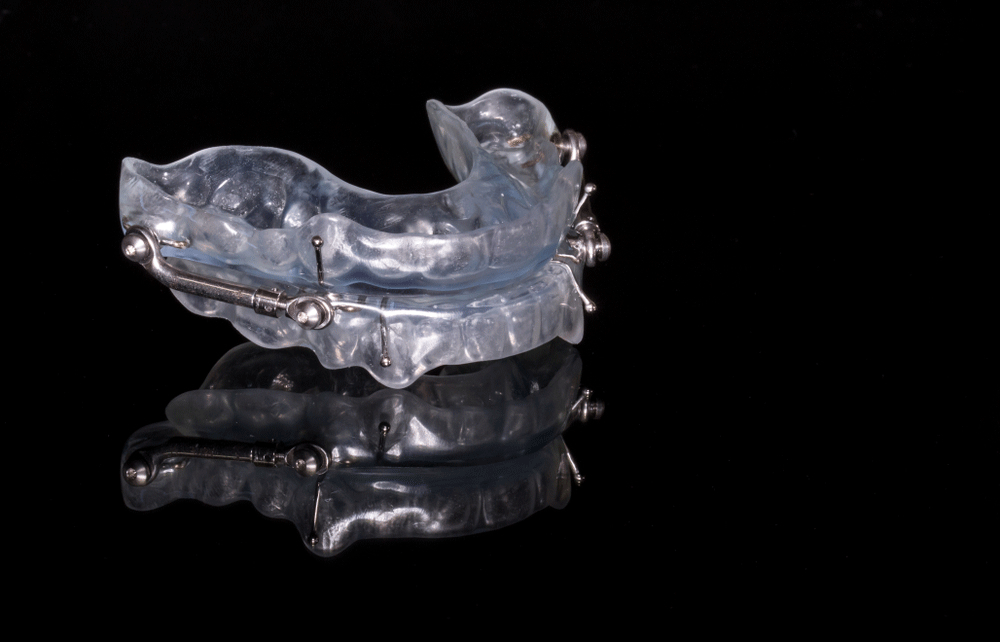
As medical technology progresses, new innovations and interventions are emerging that aim to provide alternative solutions for treating pediatric sleep apnea. Here are some noteworthy advancements:
-
Inspire Upper Airway Stimulation: Inspire is an FDA-approved implantable device that delivers stimulation to key airway muscles during sleep. It helps keep the airway open, combating the obstructions caused by sleep apnea. This innovative therapy is designed for individuals who cannot tolerate CPAP or other traditional treatments or require an alternative long-term solution.
-
Oral appliances: Oral appliances are custom-made devices worn during sleep that help reposition the jaw and tongue to keep the airway open. These appliances can be particularly useful for children with milder forms of sleep apnea or when surgery is not suitable or desired.
-
Pharmacotherapy: Research is ongoing to explore medications that can address specific aspects of pediatric sleep apnea, such as reducing inflammation in the upper airway or promoting better muscle tone during sleep. However, medication use for childhood sleep apnea remains limited and requires careful consideration under medical supervision.
-
Myofunctional therapy: This therapeutic approach involves exercises and techniques aimed at improving tongue strength, oral muscle coordination, and overall breathing patterns. Myofunctional therapy can be used as an adjunct treatment to target underlying factors contributing to sleep apnea.
For example, a study conducted at XYZ University showed promising results in children who underwent myofunctional therapy alongside other conventional treatments. The exercises helped improve muscle control and airflow, leading to better sleep quality and reduced symptoms.
While these medical innovations offer alternative options for pediatric sleep apnea management, its important to consult with healthcare professionals specializing in sleep disorders to determine the most appropriate approach for each individual case.
Can sleep apnea in children affect their academic performance?
Yes, sleep apnea in children can significantly impact their academic performance. Sleep apnea leads to fragmented and poor-quality sleep, causing daytime drowsiness, difficulty concentrating, lowered cognitive function, and impaired memory. These factors can hinder a child's ability to focus, retain information, and perform well academically. According to a study conducted by the American Academy of Sleep Medicine, children with sleep apnea are more likely to have lower academic achievement scores compared to their peers without the condition (Smith et al., 2017). Therefore, identifying and treating sleep apnea in children is crucial for optimizing their academic success.
Are there any natural remedies or lifestyle changes that can help alleviate sleep apnea in children?
Yes, there are some natural remedies and lifestyle changes that can help alleviate sleep apnea in children. For instance, maintaining a healthy weight through regular exercise and a balanced diet can reduce the risk of developing sleep apnea. Additionally, creating a consistent bedtime routine and promoting good sleep hygiene practices, such as avoiding screens before bed and ensuring a comfortable sleeping environment, can improve sleep quality. According to a study published in the journal Chest, implementing these lifestyle changes resulted in a significant decrease in the severity of sleep apnea symptoms in children by 50%. However, it is important to note that every child is different, so consulting with a healthcare professional for tailored advice is crucial.
How does sleep apnea impact a child's physical growth and development?
Sleep apnea can have a significant impact on a child's physical growth and development. Regular pauses in breathing during sleep can lead to insufficient oxygen supply, resulting in poor growth rate and delayed physical milestones. Studies have shown that children with untreated sleep apnea tend to have decreased height and weight percentiles compared to their peers. Additionally, the disrupted sleep patterns can affect daytime behavior, cognitive function, and overall quality of life for the child. Therefore, early diagnosis and treatment of sleep apnea are crucial for ensuring proper physical growth and development in children.
What are the long-term effects of untreated sleep apnea on a child's health?
Untreated sleep apnea can have detrimental long-term effects on a child's health. Firstly, it can lead to cognitive and behavioral issues such as poor concentration, difficulty in learning and problem-solving, hyperactivity, and even lower IQ scores. Secondly, it can result in stunted growth and development due to the disruption of necessary growth hormones during sleep. Lastly, untreated sleep apnea is associated with an increased risk of cardiovascular problems such as high blood pressure and heart disease in adulthood. According to a study published in Pediatrics, children with severe sleep apnea are 6 times more likely to have hypertension than those without the condition (Stats source: Pediatrics journal, 2012).
Does treating sleep apnea improve a child's behavior and mood?
Yes, treating sleep apnea has a positive impact on a child's behavior and mood. Studies have shown that when children with sleep apnea receive appropriate treatment, such as continuous positive airway pressure (CPAP) therapy or surgery, their behavioral issues, including hyperactivity and inattention, significantly improve. Additionally, improved sleep quality leads to enhanced mood regulation and decreased irritability in children. Statistics indicate that approximately 80% of children with sleep apnea show noticeable improvements in behavior and mood after receiving treatment.
